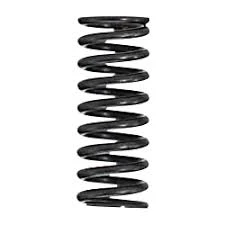
- Mobile Phone
- +8613931874955
- sales@cntcmetal.com
spring wire forming
The Art and Science of Spring Wire Forming
Spring wire forming is an essential manufacturing process that involves shaping wire into springs or other complex geometries. This technique is pivotal across various industries, including automotive, aerospace, electronics, and general manufacturing. Understanding the fundamentals of spring wire forming illuminates the intricate balance between design, material selection, and production methods.
The Basics of Spring Wire Forming
At its core, spring wire forming involves bending and twisting wire to create components that can store and release energy efficiently. The springs produced through this process may be compression springs, extension springs, torsion springs, or specialty forms, each serving unique functions in devices and machinery. The versatility of spring wire allows manufacturers to create components of varying sizes, shapes, and load capacities.
The material used for spring wire is crucial in determining the performance characteristics of the final product. Common materials include stainless steel, music wire, oil-tempered carbon steel, and alloys specifically designed for spring applications. The selection of wire material is often driven by the operating environment, load requirements, and desired fatigue resistance. Properly heat-treating the wire can also enhance its strength and elasticity, making it more suitable for demanding applications.
The Wire Forming Process
The process of spring wire forming begins with the selection of the appropriate wire diameter and type, which impacts the spring's mechanical properties. The production typically involves several key stages
1. Cutting The wire is cut to an accurate length based on the design specifications. Precision cutting ensures that the final springs have uniform dimensions and consistent performance.
2. Bending and Shaping Using specialized machinery, manufacturers bend and shape the wire into the desired configurations. This may involve computer numerical control (CNC) machines for intricate designs that require high precision. The ability to control the bending angle and radius is critical for achieving the desired mechanical properties of the spring.
3. Coiling For helical springs, the wire is coiled around a mandrel. This process demands expertise to ensure the coils are evenly spaced and that the spring maintains proper dimensional tolerances.
spring wire forming

4. Heat Treatment To enhance the spring’s mechanical properties, heat treatment processes are often applied. The wire is heated to a specific temperature and then cooled at a controlled rate to improve its tensile strength and fatigue resistance.
5. Finishing This stage may involve surface treatments, such as plating or coating, to enhance corrosion resistance or reduce wear. Finishing processes help ensure the springs meet both aesthetic and functional specifications.
Quality Control
Quality control is paramount in spring wire forming. A series of tests and inspections are typically conducted throughout the manufacturing process, including visual inspections, dimensional checks, and mechanical testing. These measures ensure that the springs meet the required specifications and perform reliably in their intended applications.
Applications and Innovations
Spring wire forming has widespread applications. In the automotive industry, springs are critical components in suspension systems and braking systems. In the aerospace sector, they are used in everything from landing gear to control mechanisms. The electronics industry relies on springs for switches and connectors, while consumer products often include springs in various mechanical systems.
Innovation in spring wire forming continues to evolve through advancements in technology, including additive manufacturing and smart materials. Engineers and manufacturers are continually exploring new designs and materials that increase the efficiency and effectiveness of springs, pushing the boundaries of what is possible in this field.
Conclusion
Spring wire forming is a fascinating intersection of art and science that requires a deep understanding of materials, engineering principles, and manufacturing techniques. As industries continue to advance and diversify, the demand for innovative spring designs will grow, offering exciting opportunities for manufacturers and engineers alike. With a solid grasp of this process, businesses can produce high-quality springs that meet the increasing demands of modern applications, reinforcing the integral role that spring wire forming plays in technological progress.
share:
-
Why Sacrificial Formwork Is Redefining Underground ConstructionNewsJun.06,2025
-
The Structural Dynamics of Modern Concrete: How Snake Spacers Revolutionize Flexible ReinforcementNewsJun.06,2025
-
Snake Spacers Smart-Lock Concrete Reinforcement with Surgical PrecisionNewsJun.06,2025
-
Snake Spacers: Reinforcement Precision for Modern Concrete ProjectsNewsJun.06,2025
-
Snake Spacers Powering Concrete's Structural DNANewsJun.06,2025
-
Slither into Success: Snake Spacers' Precision Bite for Unbreakable ReinforcementNewsJun.06,2025
-
Sacrificial Formwork: Building Stronger, Faster, and Safer StructuresNewsJun.06,2025



















